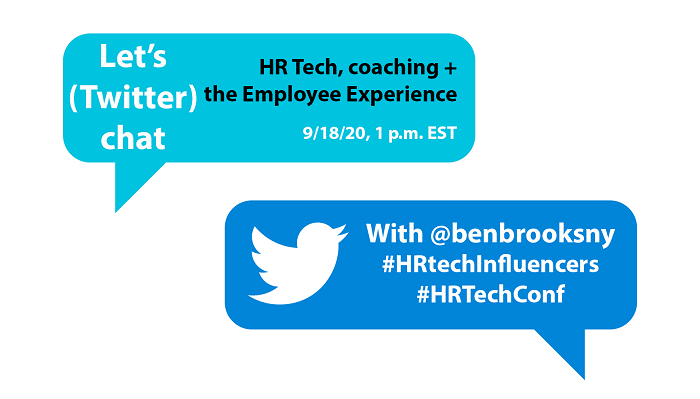The role of HR leaders has never been more important, as organizations struggle to keep up with near-daily changes to the world of work ushered in by the coronavirus pandemic and other global challenges. With such a tall order for HR leaders, it’s beneficial to look to industry experts for their experience and guidance. Earlier this year, HRE and the HR Tech Conference unveiled the second edition of the Top 100 HR Tech Influencers, comprised of HR, business and technology leaders whose insights are needed now more than ever.
Brooks: I frankly haven’t seen a bunch of new tools launch just yet, although we should still expect this to be an ever-growing space, as downturns often serve as the birthplace of many new businesses and technologies.
As anyone in sales will know, in order to attain widespread adoption, these new technologies will have to find their budget from an existing line item, thus replacing spending on legacy solutions. What could be improved in HR, from a software perspective? Lots! So there is definitely a ton of opportunity. I suspect that collaboration and communication tools will be an enormous area of innovation, as companies seek to design and manage their cultures remotely. I also suspect that we’ll begin to see performance management platforms such as Asana or Basecamp starting to encroach on existing HR annual review tools/processes, as things like goal-setting, status and celebration become more continuous—much like employee listening and feedback.
Additionally, a majority of talent management programs are delivered in-person, whether that be in-office or at external facilities. While e-learning has made traditional training a virtually deployed offering, there has been far less innovation related to the virtualization of top talent development and retention programs.
HRE: How can HR leaders—and HR tech buyers—continue to focus on and invest in areas like D&I with business priorities so suddenly shifted?
Brooks: While employers have made tremendous strides over the past decade or two with demographics like LGBTQ employees, we still have a long way to go for BIPOC employees, women and people with disabilities. Token efforts of the past, such as buying a table at a gala, applying for awards, subscribing to benchmarking, sending a few employees to a conference or “celebrating” various heritage days and months will not be sufficient in the eyes of the labor force (both those who identify as diverse and their allies—a very large population)!
If D&I wasn’t already a top priority for HR, it is now—and it must be, in order to stay competitive. Management and HR are going to be held more accountable by increasingly vocal internal activists who demand real progress, and employers will need to transform processes like recruiting, internal mobility, compensation, and learning and development to root out bias and to create more equitable outcomes by design. And flexibility for employees will increasingly be seen as a massive “unlock” to inclusion. This will be far harder (and take far longer) than almost anyone is anticipating, and managing stakeholders’ expectations is going to be critical.
HRE: How do you think the remote work switch will affect employee expectations for workplace technology?
Brooks: This is going to be a massive shift! Before, the office could have been seen as existing within a bit of a time warp, where hardware and software were far behind what we had in our consumer lives, but this was less apparent, as we left most of our consumer tech at home or in our pockets. Now, however, employees will be toggling between their consumer tech (e.g. Amazon, Venmo, Grubhub, Uber, Alexa, Hue Lights, Nest Thermostats) and workplace tools—and the contrast will be quite jarring.
Adoption of enterprise tools has always been extremely challenging, and I fully expect that these efforts will become even harder if the tools are not at the same level of attractiveness, usefulness, intuitiveness and frictionless design that we see in our personal lives.
4. How will tech differentiate the companies that thrive after the pandemic from those that do not?
Brooks: Larger organizations are likely to be left in the dust by smaller and mid-size organizations. Anyone who’s worked in the Fortune 1000 can tell you how it is nearly impossible to make decisions and experiment with emerging technologies, beyond super small-scale pilots.
Smaller organizations, by contrast, will be able to move much faster, leapfrogging their larger, slow-moving competitors. They’ll have the ability to take risks, to further embrace tools that democratize information, and to increase collaboration—because their cultures embrace this new way of working; something that is going to prove far harder to deploy in traditional, hierarchical organizations. As a result, a major aspect of what a “great place to work” looks like to employees is going to be a function of the tools and technologies they are provided to do their best work.
